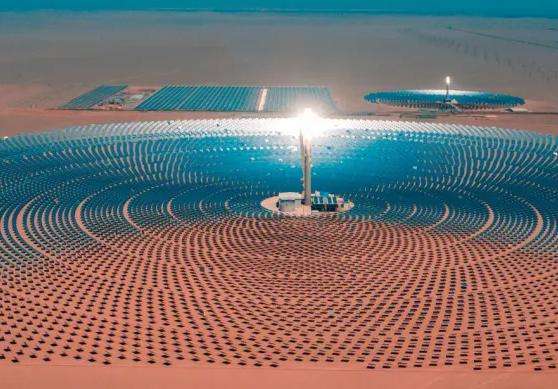Anti-reflective coating: Using the principle of thin film interference, the upper and lower surfaces of the film produce destructive interference for reflected light. 'a certain color of light,
The result is to reduce the reflection of light and increase its transmission. Such as: eyes, camera lens.
Anti-reflective coating: uses the principle of thin film interference to cause constructive interference of reflected light of a certain light color on the upper portion. and the lower surfaces of the film,p>
The result is to increase the reflection of light and reduce its transmission. Such as: spacesuit.
Haha, now you should be able to judge for yourself.
What are the advantages of developing thin-film solar cells? Why ishas it become a new hot spot for investment in the national photovoltaic field? Who are the leading international manufacturing companies?
The cross section of a solar panel has five layers: photovoltaic glass, EVA, solar cells, EVA and backsheet. (Tedlar film is the backsheet)
The backsheet of solar cells is located on the back of the solar panel, protecting and supporting the cells, and has insulation, resistance to reliable water and resistance to aging.
Usually has a three-layer structure (?PVDF/PET/PVDF?). The external protective layer ?PVDF?has good resistance to environmental erosion. The middle layer is made of ?PET?a polyester film with good insulating properties. PVDF and EVA layers have good bonding properties.As the national war against polysilicon is in full swing, the cell feast sthin-film olar oils slowly began. As the two major players in the field of photovoltaic power generation, crystalline silicon cells and thin film cells appear to be vying for supremacy.
Thin film batteries, as their name suggests, consist of a thin film within a solar cell. They use very little silicon and are easier to reduce costs. high-efficiency energy product, but also a new type of construction material that can be easily integrated into architecture. Under the background of a continuous shortage of silicon raw materials in the international market, thin-film solar cells have become a new trend and hot spot in the development of the international photovoltaic market.
There are currently three main types of thin-film solar cells that can be industrialized and mass-produced:silicon-based thin-film solar cells, copper-indium-gallium-selenide (CIGS) thin-film solar cells, and cadmium telluride (CdTe) thin-film solar cells.
Although thin-film solar cells have appeared for a long time, due to problems such as low photoelectric conversion efficiency and high attenuation rate (light-induced decay rate), they have not attracted enough industry attention in the past. few years, and their market share is very low. With the continuous advancement of its technology, the efficiency of photoelectric conversion has been rapidly improved. It is now around 30 to 40% higher than 2 years ago. Although there is still a big gap compared to crystalline silicon cells, it uses fewer materials and. has a simple process, low energy consumption and certain advantages in termss costs, and is increasingly accepted by the industry. Therefore, in the past three years, the thin-film solar cell industry has developed rapidly.
Global solar cell production reached 3,436 MW in 2007, an increase of 56% from 2006. The market share of Chinese manufacturers increased from 20% in 2006 to 35% in 2007, while that of Japanese manufacturers Japanese manufacturers increased from 39% in 2006 to 26%. In addition to factors such as restricted supply of upstream silicon materials and declining capacity of photovoltaic system installations in the local Japanese market, Japanese manufacturers have begun to adapt. The development of the next generation of thin-film solar cells also has a considerable relationship.
In 2007, the growth rate of thin-film solar cell production (including a-Si, μc-Si, CdTe, CIGS and other technologies) continued to outperform that of the entire industry. Thin-film solar cell production reached 400 MW, up from 181 MW in 2006. A substantial increase of 120%. The market share of thin film solar cells increased from 8.2% in 2006 to 12% in 2007 and reached 15% to 20% in 2007. 2008. With the continuous improvement of cell conversion efficiency and the cost advantage of large-scale production of thin-film solar cells, it is possible to further improve its market share.
As a result, following the rise of solar modules and polycrystalline silicon, thin-film batteries have become a new investment hot spot in the domestic photovoltaic field.
Compared to crystalline silicon cells, the cost reduction potential of thin-film batteries is much greater, which is mainlydue to rapid technological advancements in thin-film batteries. It is estimated that future thin-film solar power generation capacity could reach 20% of the entire solar power sector, up from just 7.6% in 2007, showing that there is room for that. Thin-film solar energy needs to be made thinner and performance indicators improved. There are many physical methods, such as the ion beam method for depositing thin films of nanocrystalline silicon. If domestic companies can improve these methods, it will be very promising.
China Investment Information Network 2009-2012 Investment Analysis and Investment Forecast Report in China's Thin Film Solar Cell Industry














